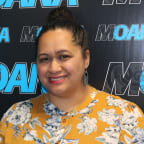Te Ahi Kaa features coverage of Tā Atea, the indigenous tā moko hosted by Te Tuhi Māreikura Trust, held in March.
Indigenous artists from around the world attended a wānanga in Tauranga with a focus on the rival of Tā moko and tatau customs.
Artists from British Columbia, America, Greenland and the Pacific Islands attended Tā Atea at Whareroa marae, but while tā moko was the theme of the gathering, artists shared their other disciplines.

Ceremacist and Uku artist, Wi Taepa at Whareroa marae, Tauranga. Photo: RNZ/Justine Murray
Ceramic and uku artist Wi Taepa has been a part the Māori clay makers collective Nga Kaihanga Uku since its inception in 1987, he says the wānanga provided the opportunity to share how clay work and tā moko are similar in its process.
“A lot of the artists sat down with me as a group and made some interesting work pertaining to tā moko also it was a lovely way to bridge that gap …everything that you do with the skin you’ve got to do with the clay, you make sure its clean, you got to stretch it, by stretching it to the right thickness, having it just right so that you can put the designs on it” he says.
Wi is a leading figure in contemporary Ceramics, he has exhibited his work around world with many of his pieces held in private collections. The 74 year old continues to teach clay and uku, in early March he exhibited his work at the Wellington Arts Festival and talked about the future of Clay making.
“There was a panel of us…Baye Riddell, myself and Dorothy Waetford we were there to give a broader look about where we’ve come from, how we’re doing, and where we are going to…our presentation was well received and so was our work, quite a lot of it sold which shows you that there is a place [for uku] in the market” he says
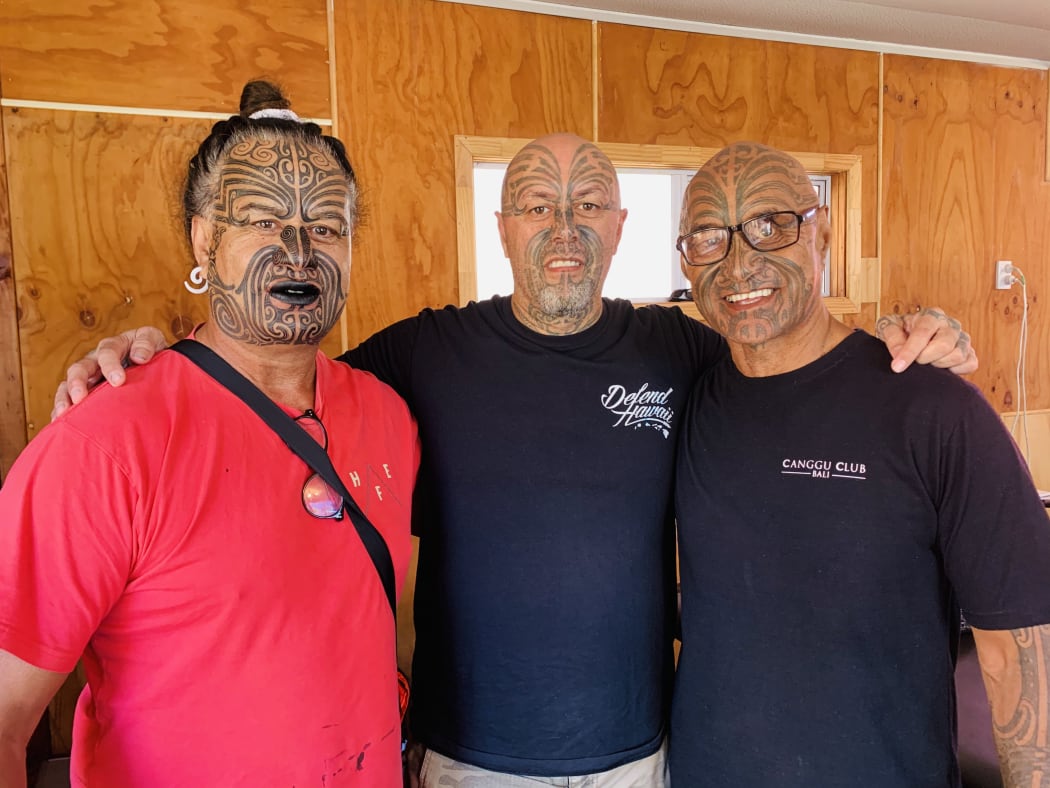
Wetini Mitai Ngatai, Turumakina Duley and Te Kehukehu Butler Photo: RNZ/Justine Murray
During the week-long wānanga Gold coast tā moko artist Tukumakina Duley completed five moko kauae (tā moko on the chin), he worked for two days on a client's sleeve and finished up at 4.30am in the morning. During one afternoon session, he tattooed the lip of kapahaka tutor and entrepreneur, Wetini Mitai-Ngatai, adding this addition to his mataora (facial tā moko) Turumakina has worked as an artist for 25 years as a tā moko artist and says it is now more accepted.
“Moko now is such a mainstream part of Aotearoa it’s become normal in all levels so society I mean Nanaia Mahuta in politics and businessmen are even wearing it, it’s kind of been our goal for the last 25 years that I’ve been involved [with moko] is to normalise it again” he says.
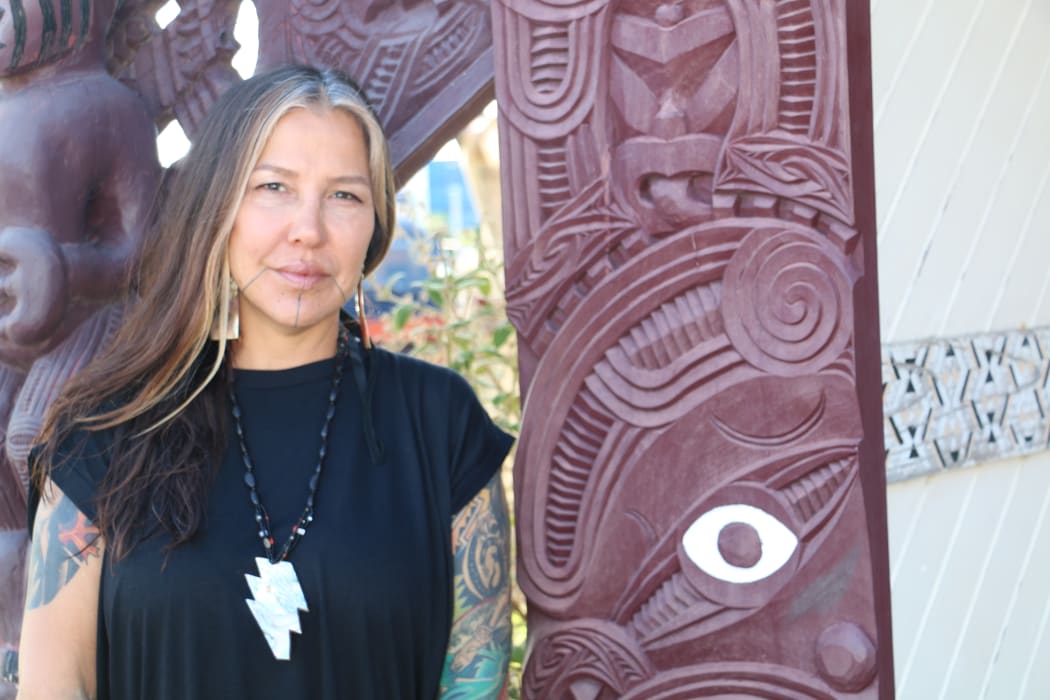
Tiffany Adams tribal homelands is in Southern California and the Sierra Foothills. Photo: RNZ/Justine Murray
Tiffany Adams is citizen of the Chemehuevi tribe of Southern California, and Konkow Nisenan of the Sierra Foothills, her tribal homelands are in the corners of the Mohave dessert, Arizona and California, Tiffany is an artist she wears a facial chin tattoo.
“Our tribal tattoos our chin tattoos don’t necessarily have a meaning behind them some tribes do we just don’t know much about this…as colonisation spread across the united states by the time that they got to California they weren’t trying to put us on reservation there was a strict extermination policy ….a lot of this was lost.” she says
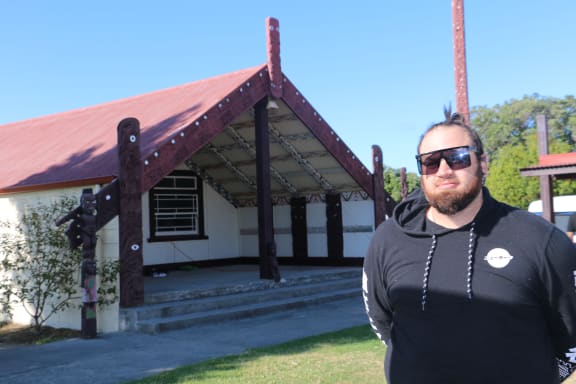
Julious Mora began working as a taa moko artist in Australia before moving back to Aotearoa. Photo: RNZ/Justine Murray
Julious Mora grew up in Te Awamutu and remembers the carvings inside the meeting houses as a child, it’s a sign perhaps that today as a moko artist he would be using this as a form of inspiration, he says the natural thing for him to draw is the patterns of his ancestors. Julious began his tattoo career in Australia.
“It sort of just starting with me messing with the ta machine and had a long line of bros keen for some free ink…it allowed me to get better and better there was a point where I tried to avoid it because I was into travelling and I had a good job, I wasn’t really trying to pursue it, but it followed me everywhere I went.”
Julious moved back to Aotearoa two years ago and has been working as a ta moko artist in the Waikato region.
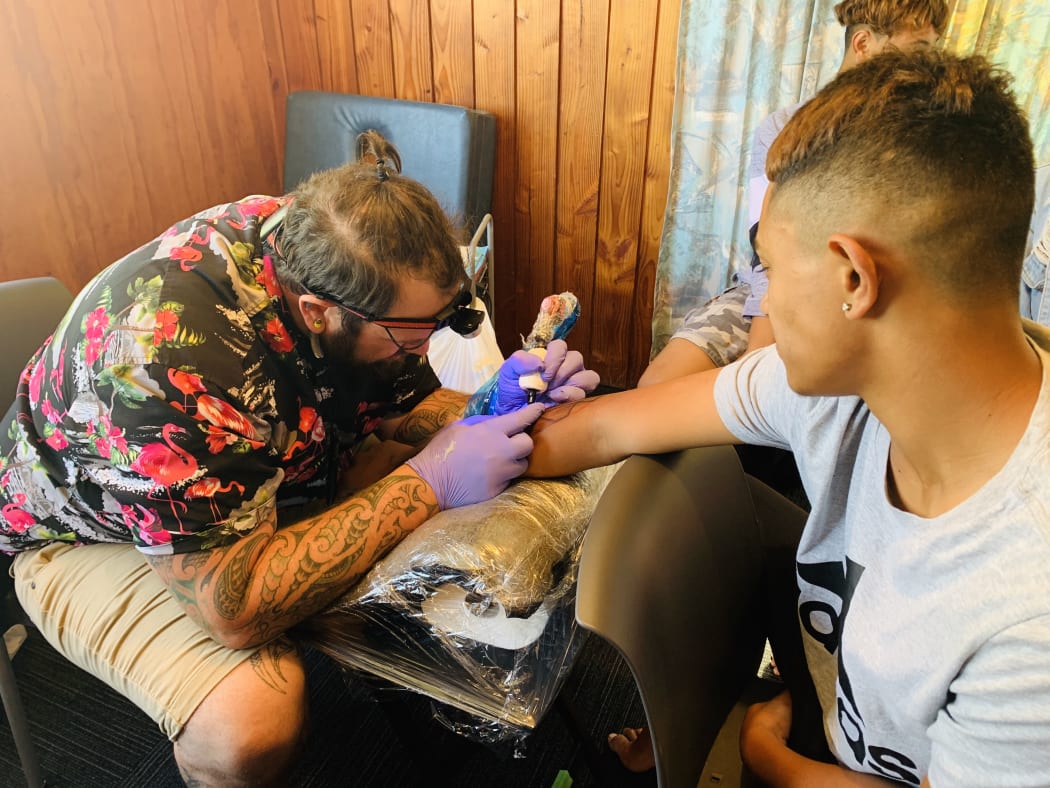
Julious Mora, taa moko artist, Whareroa marae. Photo: RNZ/Justine Murray
